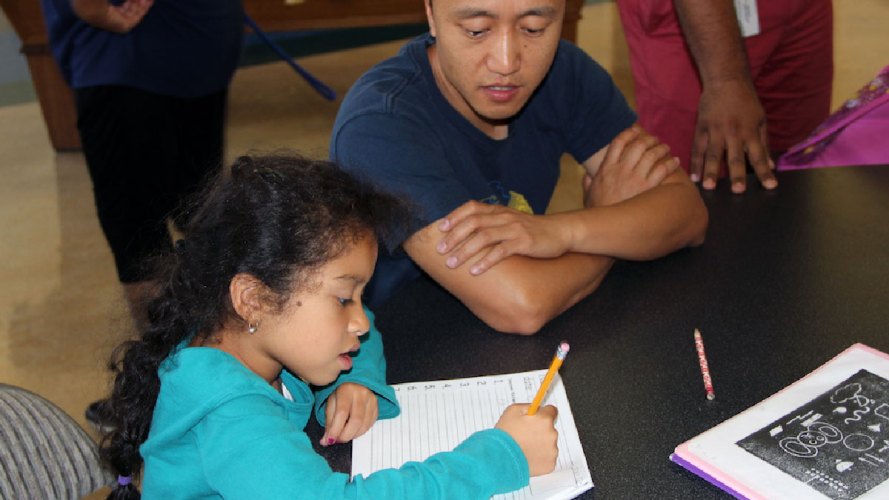How Has Corporate Social Responsibility Changed in 2021? Empower Your Employees



Frank Cooper III, CMO of BlackRock discusses the evolution of corporate purpose with the head of global marketing for Salesforce.org.
Recently I joined my former colleague, Frank Cooper III, on Salesforce’s “Blazing Trails” podcast to talk about leading with purpose, the interplay of wealth and wellness, and technology in the 2021 new normal. For those of you who don’t know Frank, he is the senior managing director and global chief marketing officer of BlackRock, the world’s largest asset manager. Frank’s career journey includes time at Pepsi, BuzzFeed, AOL, and Def Jam. Frank is a cerebral thinker and our conversation got me thinking about what I’m seeing and hearing these days around the notion of corporate social responsibility, sustainability, and “doing good.”
“There are so many buzzwords [around corporate purpose] floating around now it’s easy for all of us to get lost in it,” said Frank. We see terms like “citizen philanthropy,” “stakeholder capitalism,” corporate social responsibility (CSR), “sustainability” bandied about. But what do they all really mean?
As the senior vice president of Salesforce.org, I spend a lot of time working to answer this question. Doug Scott, CEO of Ethic, an asset manager focused on sustainable investing, recently recounted seeing a rapidly growing demand for sustainable investments. He feels investors today seek to align their capital with their values. Compare this trend to 10 years ago. There’s a lot more than the bottom line at stake now.
The notion of companies “doing good,” which first came on the scene in America in the second half of the 20th century, has changed in a matter of decades.
“Purpose has been a movement from companies doing benevolence on the side, which is philanthropy, to thinking a lot about cause marketing, which we saw a lot of in the 60s, to thinking about CSR, which is addressing the externalities of the company, to pulling it to the core of what the company is about.” said Frank. “The core of a company’s ultimate goal is [now] about doing something positive for society. That’s the movement we’re seeing.”
The way I see it these days, corporations, conscience, and culture are flowing together like three tributaries of a river. The confluence is creating a new corporate imperative: increase your do-to-say ratio related to social good to drive stronger long-term results. This includes stronger brand purpose, stronger corporate culture, product innovation that solves the hardest societal challenges, and healthy, sustainable business growth.
Corporate social responsibility at Salesforce
So why is “doing good” gaining momentum? I think our journey at Salesforce shines some light on the larger movement. It started in 1999, when we introduced the 1-1-1 model, giving 1% of product, 1% of equity, and 1% of employee time to philanthropic causes. As our CEO Marc Benioff said, “That was extremely easy for us at the time because we had no employees, we had no profit, and we had no equity.” Afterall, we were a start-up with under 100 employees at that stage of the game.
By 2015, with roughly 16,000 employees, we realized our goodwill had created a good problem. Volunteerism and giving had become the beating heart of our corporate culture. It was a reason why people wanted to work at Salesforce. It was also a reason why people stayed. We had successfully embedded philanthropic values in our employee experience.
It was a dream come true for our founders, but the manual process supporting the effort was far from dreamy. We didn’t have an automated process for matching gift disbursements. Our CFO was hand-signing about 500 checks per month. And our programs team was sharing information about where to volunteer in cities around the world by sending emails, making phone calls, and keeping spreadsheets.

We were struggling to track everything in a cohesive and meaningful way. And we had clearly outgrown our program management system. It lacked real-time measurement and was tedious for our employees. In the words of Nick Bailey, GM of Philanthropy Cloud “Our previous solution to `throw more bodies at it’ was no longer working.”
It was ironic. As the #1 CRM provider, known for helping companies of all sizes increase efficiency and scale, we were having the actual problem we live to solve. So, we got to work. We reimagined the entire workflow surrounding employee volunteerism and giving to create what is now called Philanthropy Cloud.
Our program managers were happy because we automated the manual process of validating nonprofits and dispersing matching grants. Employees were happy because they were no longer spending excessive amounts of time searching for and logging the volunteer opportunities of their choice. Management was happy because employee engagement continued to thrive and they now had a clear understanding of our culture carriers, along with phenomenal metrics for internal and external use.
Problem solved? Not quite. We solved our problem, but not the problem.
The democratization of philanthropy
Our partners and our ecosystem needed a solution too. Outside of our walls, philanthropy was evolving from a top-down, controlled process to a bottoms-up, all-can-participate approach. I was watching with awe as interview questions from candidates shifted from “what’s your bonus structure” to “what are your values.” Citizen philanthropy was on the rise. Those tributaries — corporations, conscience, and culture — really started to converge.
Then in 2018, Larry Fink, chairman and CEO of BlackRock wrote, “Without a sense of purpose, no company can achieve its full potential. It will ultimately lose the license to operate from key stakeholders.” His words fueled the corporate purpose revolution, urging companies to renew their social license to operate. CEOs and CFOs around the world took note. That same year, 15-year-old Greta Thunberg, started spending her days outside the Swedish Parliament, holding up a sign reading “School Strike for Climate.” Soon thereafter, students (including my tween) who shared Greta’s frustration, mobilized around the world. While Larry was speaking to Wall Street, Greta was connecting with Main Street. CMOs and heads of communications took note.
The following year, Glassdoor declared “Culture Will Come First,” meaning a strong company culture was a must for businesses wanting to be competitive in recruiting and retaining the best talent. Further, since today’s candidates have more opportunities to get an insider’s look at a company’s organizational culture through online platforms like Glassdoor and social media, companies need to walk their talk. Finally, companies with better cultures tend to perform better financially and have more satisfied customers. Heads of HR have taken note.

In 2019, you could visualize corporations, conscience, and culture converging at an unprecedented level. Then 2020 came along. With every crisis that year brought, we were propelled into the future faster. There’s little room now for a gap between words and deeds — whether that’s on the company level or the public persona level.
Today, individuals are renewing their social license to operate. Not just companies. People are putting community before convenience, voting with their purchases, and opting for more purposeful lifestyles. Everyone is rethinking their sense of “doing good” because they also want to achieve their full potential. If leaders can effectively listen to their employees and their communities, while harnessing business as the greatest platform for change, they’ll be poised to further the movement.
The power of philanthropic visibility
Salesforce wants to power this movement by making corporate acts of philanthropy easy while maximizing visibility for “doing good” within an organization. This fuels a thriving culture of employee engagement as colleagues feed off each other’s enthusiasm and successes. It also enables CEOs, CFOs, CMOs, and Heads of HR and CSR with real-time data to track and optimize their programs — so they too can make their company culture tangible.
So far, it’s working. Salesforce logged 800,000 volunteer hours in 2020, a year when many of our traditional avenues for giving back were severely challenged. And it’s working for our customers like Kellogg’s, AAA, and Gillette, too.
“With Philanthropy Cloud, we have access to so much rich and robust data that we didn’t have before.” Stephanie Slingerland, global philanthropy and social impact lead at Kellogg Company said. My contacts at AAA said they raised $760K in just two weeks. And Gillette reports an increase of 20% in average gift per employee. These results are also bolstering company cultures, helping these companies attract the highest caliber talent out there. When companies empower individuals with the ability to give back at their fingertips, they drive the businesses they are a part of to be engines for inspiring quantities of social good. Turns out, the power of a thousand buzzwords isn’t really in business after all. It’s in each individual who inhabits these organizations, when they’re emboldened to speak up and give back in whatever way inspires them.
Harness the power of your employees and increase your corporate social responsibility




























